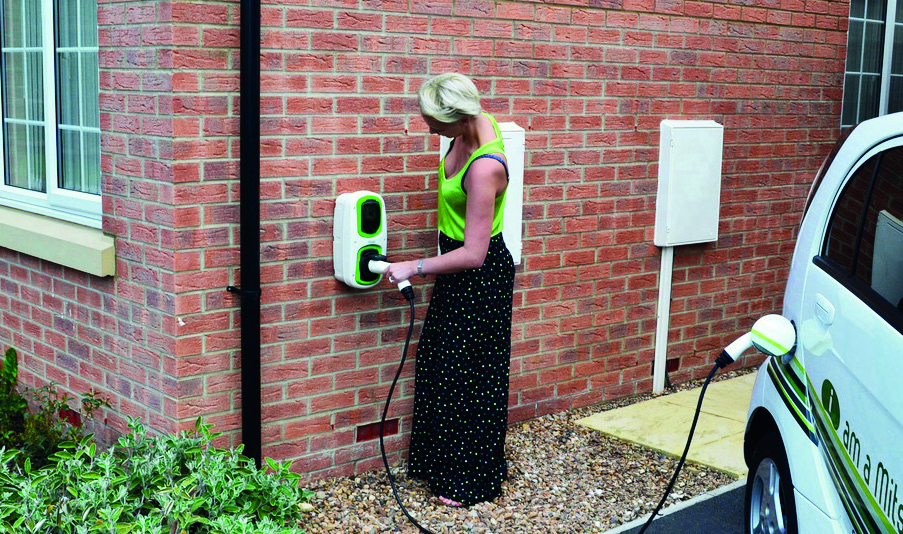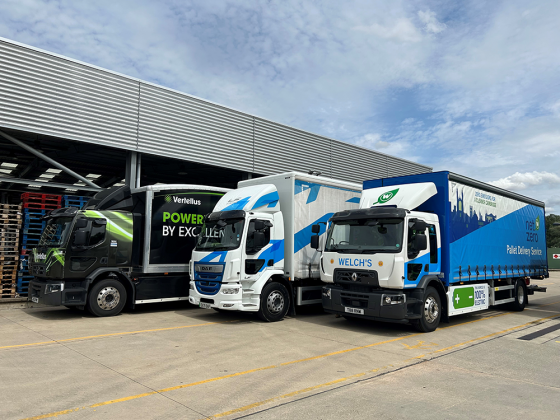The UK’s charging ambitions

The government’s Road to Zero strategy revealed its vision for an electric vehicle charging infrastructure that meets the needs of plug-in vehicles and their drivers. Matthew Trevaskis, head of EVs at the Renewable Energy Association, shares his thoughts
In July, the government published its long‑awaited Road To Zero strategy, setting out the intentions to drive down vehicle emissions over the coming decades.
It included a raft of measures including increasing the content of low carbon fuels for conventional vehicles and tackling emissions from HGVs. But with regard to getting cleaner cars and vans, it relied on the promotion of ULEVs (Ultra Low Emission Vehicles) without really quantifying what that will come to mean compared to today’s technology.
Many consider the Plug-in Hybrid Electric Vehicle (PHEV) as a transitionary technology that can offer ‘the best of both worlds’ – the capability of running as zero emission (for a limited range) but without the hindrance of relying upon charging infrastructure. The reality is that many of these achieve poor fuel economy (often worse than the vehicles they replace) since the company car driver choosing them is often doing regular longer journeys. To be an effective emissions reducer, a significant number of PHEV journeys should be within the electric range (typically less than 25 miles) and the vehicle should be recharged – although it can continue to function without being plugged in.
With a lot of company car drivers choosing a PHEV for the BIK savings, there is also little incentive to charge the vehicle at home, using their own electricity, when they can just put extra fuel in it at the company’s expense. The car will then work just like a (non plug-in) hybrid.
Technology neutral
The technology neutral approach of the government towards what kind of vehicles and drivetrains will ‘win out’ means that the targets for zero emission vehicles (or the degree of zero emission running) is woolly and lacks concrete detail. There was however, more vision around the need for infrastructure to meet the needs of these vehicles and drivers.
The consideration of requiring all new build homes with parking to be ‘EV ready’ means that it will be an easier choice for motorists to choose a plug-in vehicle. This should encompass those living in apartment blocks (e.g. with underground car parking) and those with reserved spaces – even where the charging point may not be directly fed from the home. A dedicated charging point on a reserved space will likely be the favoured route but other innovations such as a ‘hub’ of charging points may equally well provide the facility.
There’s also mention given to all new street lamps incorporating charging points – following trials in parts of London – to meet the needs of urban dwellers that park on the street. Whilst this seems logical, there may be issues with taking this to scale such as the spacing of street lamps not being as frequent as parking spaces and there may not be a need anyway.
Back in February, the Office for Low Emission Vehicles, wrote to local authorities across the UK, encouraging them to take advantage of the on-street charging point grant scheme – to fit kerbside charging for residents in this kind of situation. This fund is only accessible to local authorities (LA) but doesn’t cover the entire cost of the works, so there is a potential barrier. But this does not necessarily have to be met by the LA itself. This could be from the charging hardware manufacturer or operator.
In response to this, and having been asked to comment on coverage in the media, I conducted a little informal research of my own. Social media is awash with ‘EV owner’s groups’ for various models of EVs and PHEVs, some with an international reach, some with a country focus I created a quick poll on one UK group which showed that whilst ‘classic’ home charging on a driveway (or in a garage) was still by far the most common, a significant proportion – around 20 out of 170 respondents – relied solely on ‘away from home’ charging, be it at work, whilst shopping or even making one or two specific trips each week to visit a rapid charger to get enough ‘juice’ into their car for another few days, in as little as 20 minutes.
Expanded ranges
Existing EVs from the volume manufacturers have had battery capacities touching in the 20-40kWh bracket. New vehicles are now coming to market with more energy dense batteries far exceed this. The Hyundai Kona EV now has 64kWh as the larger of the two battery options, good for a real world 200 miles, even at speed.The new Jaguar i-Pace meanwhile sports a 90kWh battery. On many days, the average motorist will not require a full charge and will also have flexibility as to when they charge to achieve lower costs, often linked to lower carbon electricity generation – either direct from microgeneration or via the grid.
In the short term, the drivers of these new generation vehicles should be aware that whilst the extra range makes longer journeys more viable and less stressful, there is a limiting factor in the majority E of rapid charging network. The existing motorway network by Ecotricity and other networks including Polar (by Chargemaster, recently bought by BP) provide a maximum of 50kW charging. The newer vehicles can accept higher charge rates if available from the new generation of 150kW+ chargers now becoming commercially available. Upgrades to existing infrastructure are expected, but until that happens charging a 90kWh battery from a 50kW charger will take around 90 minutes for an 80 per cent recharge.
Looking towards the future of 350kW charging on upcoming vehicles, including the Porsche Taycan, previously known under the project name of Mission E, National Grid are planning to enable partners to connect directly to the high voltage transmission grid – as opposed to the lower voltage distribution grid provided by the Distribution Network Operators – to allow significant numbers of parallel, high powered chargers, such as ten 350kW, on each side of a motorway services.
Practical next steps for fleets
HMRC recently announced that they would not treat electricity provided at work for recharging vehicles as a Benefit In Kind. This means that charging facilities installed for staff to recharge their vehicles could be ‘dumb’ without any means to record usage to attribute to users later.
How long that policy will stay in place, if the market for EVs grows quickly, suggests that it may be prudent to choose charging hardware that at least has the ability to record and attribute energy drawn by a particular car or driver – even if this is not required immediately. Moving to ‘smarter’ networked and connected charging points also allows for local load management where many more charging points can be provided than there is power to use in parallel, since they can be controlled to direct charge towards vehicles in more urgent need.
This will also enable the fleet to respond to grid signals to govern when the majority of charging happens – this will likely be price signals and/or control signals if there are limitations on the local grid. Smart charging is currently under consultation by the government.
Likewise, providing company car/van drivers, with an appropriate home charging point that can also report usage back to the company and allow the driver to reclaim energy costs, will incentivise drivers to maximise the environmental benefit of their vehicle, especially PHEVs, to recharge when they have the opportunity.






